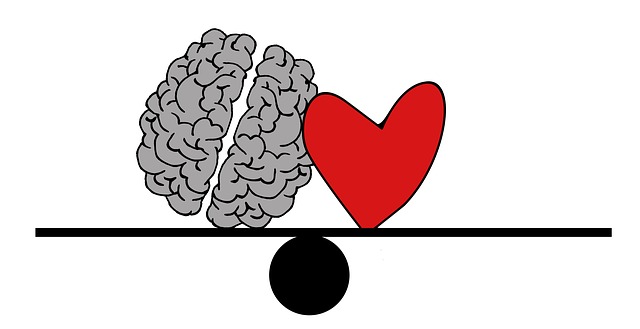Iain McGilchrist, psychiatrist, philosopher and literary scholar, has written a fascinating analysis of western culture based on brain hemispheric balance and imbalance. His book, The Master and his Emissary (2009), delves into how the left and right brain hemispheres attend to the world in very different ways, and then examines cultural phenomena to show how, despite a few periods of balance, western culture and thought has generally manifested a left-brain dominance – with detrimental consequences.
In some aspects it is similar to cultural philosopher Jean Gebser’s pioneering work almost 70 years ago, in that both examine cultural expressions throughout history to deduce developmental changes in brain/mind structure. Both point to two striking leaps in human cognition that occurred first during the Axial Age (c. 500 BCE) and later at the start of European modernity. Gebser focused on the immaterial mind and argued that they represent a leap in consciousness from the mythic to the mental structure of consciousness, while McGilchrist focuses on the material brain, arguing that they represent an advance in frontal lobe functioning of both hemispheres. Both are of course intimately related, with the latter providing the physical substrata that enables the former.
 Like the new axial vision, both Gebser and McGilchrist argue that the first manifestation of this advance in the Axial Age (focusing on axial Greece) exhibited a more balanced mode of thought and expression, although McGilchrist does point to a slide towards left-brain dominance in Greece under Parmenides and Plato. But like Gebser he recognises that the balance remained throughout axial Greece whereas in modernity there was a much more pronounced left-hemispheric dominance and imbalance. While there was, according to McGilchrist, an initial right-hemispheric dominance during the Renaissance (e.g. Shakespeare, the visual arts, the divinely inspired artist), the left hemisphere soon began its hegemony, first manifesting in the Reformation and continuing through the Enlightenment. This was followed by the reaction of Romanticism, an expression of the right hemisphere, and there were even brief examples of balance with the German Idealists and Goethe. But the left-hemispheric swing continued and in fact sharpened, culminating in the extreme imbalance of scientific materialism and positivism that emerged in the second half of the 19th century and which still largely dominates today.
Like the new axial vision, both Gebser and McGilchrist argue that the first manifestation of this advance in the Axial Age (focusing on axial Greece) exhibited a more balanced mode of thought and expression, although McGilchrist does point to a slide towards left-brain dominance in Greece under Parmenides and Plato. But like Gebser he recognises that the balance remained throughout axial Greece whereas in modernity there was a much more pronounced left-hemispheric dominance and imbalance. While there was, according to McGilchrist, an initial right-hemispheric dominance during the Renaissance (e.g. Shakespeare, the visual arts, the divinely inspired artist), the left hemisphere soon began its hegemony, first manifesting in the Reformation and continuing through the Enlightenment. This was followed by the reaction of Romanticism, an expression of the right hemisphere, and there were even brief examples of balance with the German Idealists and Goethe. But the left-hemispheric swing continued and in fact sharpened, culminating in the extreme imbalance of scientific materialism and positivism that emerged in the second half of the 19th century and which still largely dominates today.
McGilchrist’s analysis, while more granular and detailed, broadly coincides with Gebser’s. And it coincides closely with the critical realist metacritique of Western philosophy, which the new axial vision draws on to highlight its four major biases[1]. McGilchrist’s description of the left and right brain’s way of attending to the world bears a striking resemblance to the exclusive use of analytical thinking versus dialectical / complex thinking respectively (or Verstand versus Vernunft – the two German words for reason). It also coincides with the other biases of modern thought that critical realism and new axial vision highlight: epistemology over ontology (or representation over reality), presence over absence (or explicit over implicit), and exterior over interior (or surface over depth).
All these various critiques of modern thought call for a more balanced mode of thought. McGilchrist argues that we not only need to regain balance between the hemispheres but also that the left hemisphere (‘the emissary’) needs to recognise the primacy of the right hemisphere (‘the master’). The left hemisphere is in touch only with a representation of reality, with the map not the territory; it is very useful for practical purposes but it cannot grasp reality itself, the whole, the context and complex interrealtionships – which is where the right hemisphere, and Vernuft and dialectical / complex thinking, comes in.
For new axial vision McGilchrist’s book is a wonderful analysis and resource that deepens its own analysis of the imbalance in modernity’s mode of thinking and its call for a new, more balanced vision that moves beyond the paradigm that underlies both modernity and the postmodern reaction to it.
[1] See Roy Bhaskar, Dialectic: The Pulse of Freedom (1993); Alan Norrie, Dialectic and Difference (2010); Paul Marshall, Towards a New Axial Vision (2016).


